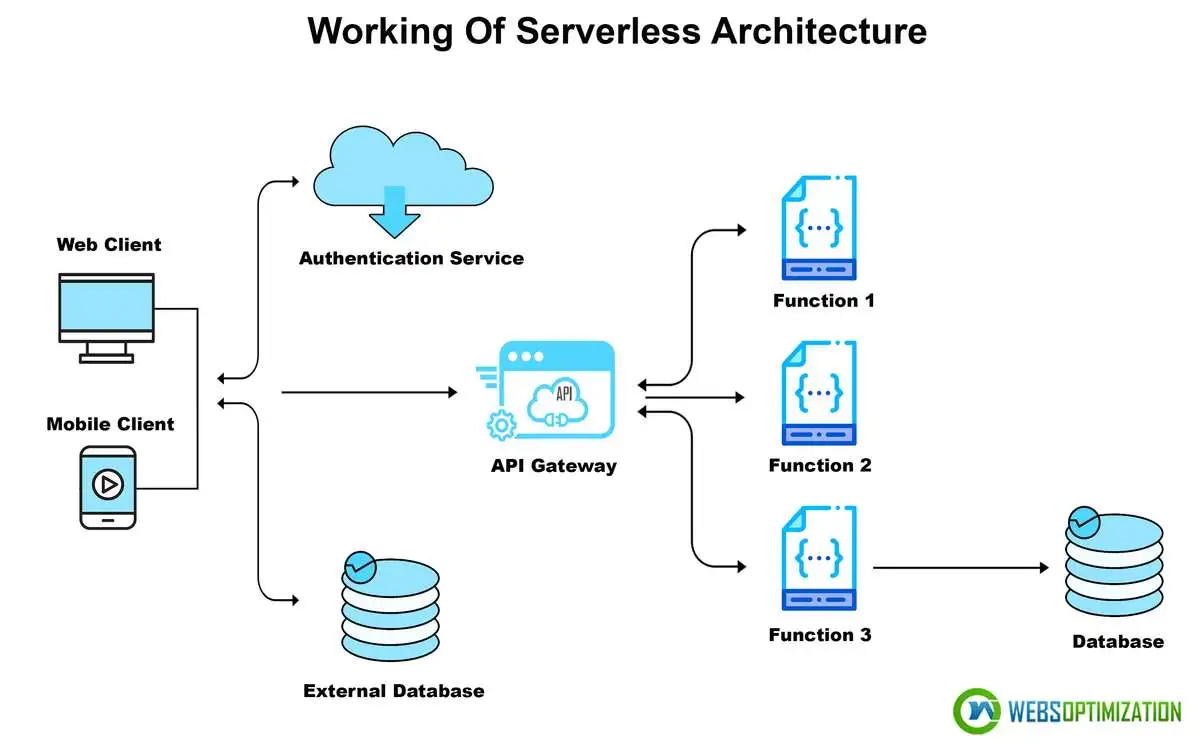Since the last few decades, the impact of technological advancements has shown some radical transformation in the cloud computing network with the introduction of serverless computing.
Today serverless computing has become the next evolutionary step to build a serverless architecture and make things easy for developers.
Serverless architecture is an innovation in cloud computing and has brought a revolutionary change in the virtual machine world. Many organizations are now adopting serverless cloud technology for better convenience and cost-effectiveness.
But what exactly is serverless architecture? And how to build a serverless architecture?
Let's look at the detailed guide on serverless architecture patterns and their benefits of serverless architecture and use case examples.
What is Serverless Architecture?
Serverless Architecture is a cloud-based model where the third-party cloud provider dynamically manages the allocation of servers. It also provides technological advancements and reduces the overall infrastructure costs.
The main objective of serverless architecture is to make it easier for software developers to execute the code without the headache of managing the infrastructure.
By using serverless solutions, developers can build light and highly flexible applications quickly.
Serverless computing has also helped many IT organizations scale their efforts to build and offer different apps and services to users across multiple architectures.
How does Serverless Architecture work?

Advantages of Serverless Architecture
i) Quick deployment and updates
There is no need to do any back-end configuration or upload any code to the servers. The developers upload code all at once or one function at a time, making it easy to fix quickly, patch, or update new features to the application.
ii) Better Scalability
here is no requirement to partition a new cloud server or purchase some additional space. The serverless architecture solution handles everything.
iii) Reduces Architecture Cost
As it is a serverless system, server and database management is outsourced to the third-party serverless development company. The customer will be charged only for computational usage.
iv) More Focus on UX
In a Serverless system, the back-end of the application is managed by the cloud provider, so the developers have more time to focus on the UX rather than focusing on the server's functioning.
Limitations of Serverless Architecture
i) Security
As the third-party vendor manages the entire back-end, there is a risk of data security, especially for applications that handle personal or sensitive data.
ii) Third-party dependency
The developers have limited control over the architecture platform, so they depend on the service providers for debugging and monitoring the application.
iii) Architecture Complexity
Due to more functions, developers face complexity and implementation problems as it takes time to assess, implement and test the functions.
iv) Implementation drawback
Integration testing in the serverless app is challenging because of the distributed nature. Functions are significantly smaller, so there are problems related to the deployment, versioning, and packaging.
What is the role of cloud providers in serverless computing?
Cloud service providers are third-party companies that offer a cloud-based platform, infrastructure, and storage services. The role of cloud providers is to allocate space for enterprise applications on the cloud servers dynamically.
These cloud providers offer cloud computing services that fall under two groups:
- 1. Backend-as-a-Service (BaaS)
- 2. Function-as-a-Service (FaaS).
Backend-as-a-Service (BaaS) :
BaaS is a cloud-based computing model that manages the back-end side of the web or mobile application development. Here the developers only write and maintain the frontend.
BaaS offers various essential back-end features which allow developing an utterly functional back-end application in the best possible way.
Examples of BaaS providers are -
- Firebase
- Azure
- Leancloud
- Kumulos
Function as a Service (Faas) :
FaaS is an event-driven execution model that lets you run small modules of code in the cloud. It offers users to execute already designed codes and is also popularly used for its real-time data processing.
Using FaaS services is accessible to code, and it also provides a cost-effective solution to implement the different microservices.
Examples of FaaS providers are -
- AWS Lambda (Amazon)
- Microsoft Azure Functions
- Google Cloud Functions
- IBM OpenWhisk
Summing Up
As you can see, Serverless architecture development has its pros and cons. However it is an exciting technology, but there are also some limitations to it.
Serverless technology cannot be the correct approach for every system. It depends on the type of components your application will have and how large it will be. Hence, if you want to build a serverless architecture, it is essential to monitor your serverless setup to make it work reliably and let's connect to get the FREE consulting call with our cloud experts


